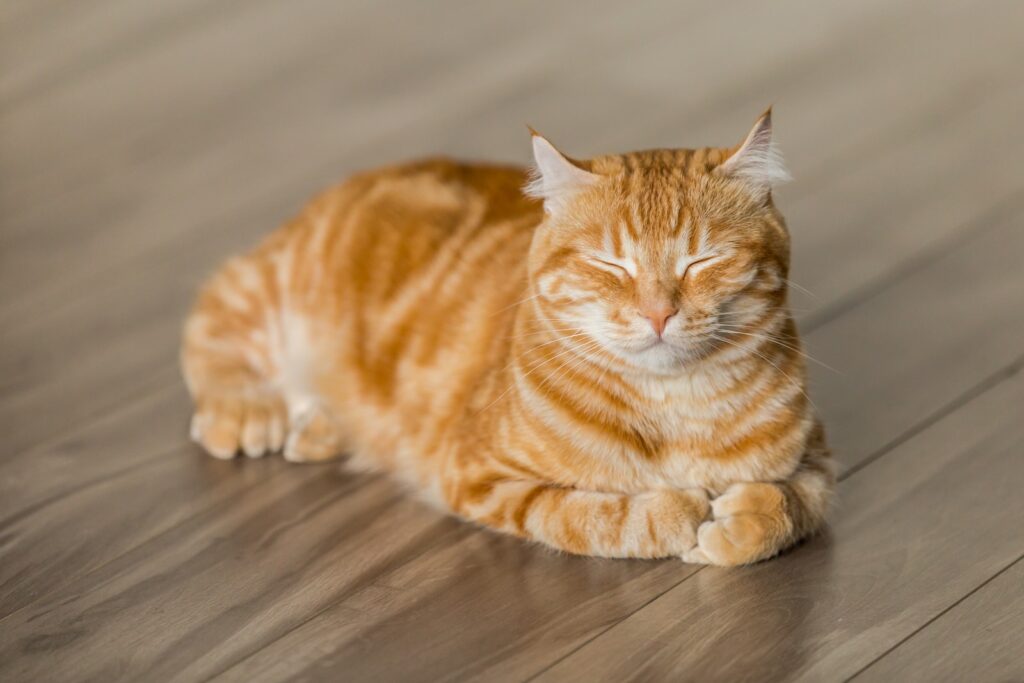Can Cats Eat Parsley? — Yes, They Can
Parsley is a flavorful herb that is commonly used as a garnish or ingredient in various dishes. The good news is that parsley is safe for cats to eat, and can even provide some health benefits. However, it is important to note that cats have different nutritional needs than humans, so parsley should only be given to them in moderation.
Can Kittens Eat Parsley?
While parsley is generally safe for adult cats, it is best to avoid feeding it to kittens. Kittens have more delicate digestive systems and may not be able to tolerate certain herbs and spices, including parsley. It is always best to consult with your veterinarian before introducing any new foods to your kitten’s diet.
Things to consider when feeding parsley to kittens?
It is important to consider the age and health of your kitten before feeding them parsley. Kittens with certain health conditions or those who are very young may not be able to tolerate parsley. Always start with a small amount and monitor your kitten for any adverse reactions.
Nutritional Benefits of Parsley for Cats — Why Parsley is Good for Cats?
Fresh Breath
Parsley contains chlorophyll, a natural breath freshener. Adding a small amount of parsley to your cat’s diet can help combat bad breath and keep their oral health in check.
Vitamin Boost
Parsley is a rich source of vitamins A, C, and K, which are essential for your cat’s overall health and immune system. These vitamins support healthy eyesight, skin, and can even help prevent certain diseases.
Digestive Aid
The high fiber content in parsley can aid in digestion for cats. It can help regulate bowel movements and prevent constipation in some cases.
Anti-inflammatory Properties
Parsley contains antioxidants and anti-inflammatory compounds that can potentially help reduce inflammation in your cat’s body. This can be beneficial for cats with inflammatory conditions such as arthritis.
Diuretic Effect
In some cases, parsley can act as a diuretic for cats. This means it can increase urine production and help flush out toxins from the body. However, it is important to note that excessive consumption may lead to dehydration, so it should be given in moderation.
Potential Allergies: Can Cats Be Allergic to Parsley?
While rare, some cats may have an allergic reaction to parsley. Signs of an allergic reaction can include itching, swelling, vomiting, or diarrhea. If you notice any of these symptoms after introducing parsley to your cat’s diet, it is important to discontinue use and consult your veterinarian.
Symptoms of Parsley Allergies in Cats
- Itching and redness of the skin
- Swelling of the face, lips, or tongue
- Vomiting or diarrhea
What to Do If Your Cat Shows Symptoms?
- Discontinue the use of parsley immediately
- Monitor your cat closely for any worsening symptoms
- Contact your veterinarian for further guidance and potential treatment
Recommended Amount: How Much Parsley Can a Cat Consume?
When feeding parsley to your cat, it is important to do so in moderation. A small amount, such as a pinch or sprinkle, once or twice a week is typically sufficient. It is best to mix it in with your cat’s regular food to ensure they consume it.
Things to Consider When Feeding Parsley to Cats
While parsley can provide some health benefits for cats, it is important to remember that it should only be given as a supplement to their regular diet. It should not replace their primary source of nutrition, which should come from high-quality cat food.
How to Feed Parsley to Cats: A Quick Guide
Introducing parsley to your cat’s diet can be a great way to add some variety and potential health benefits. Here are three simple recipes to incorporate parsley:
Recipe 1: Parsley Catnip Treats
Ingredients:
- 1/4 cup fresh parsley, finely chopped
- 1/4 cup fresh catnip leaves
- 1 cup whole wheat flour
- 1/4 cup water
Instructions:
- Preheat the oven to 350°F (175°C).
- In a bowl, mix together the parsley, catnip, flour, and water until you have a dough-like consistency.
- Roll out the dough on a lightly floured surface and cut into small shapes or use a cookie cutter.
- Place the treats on a baking sheet lined with parchment paper.
- Bake for 12–15 minutes or until golden brown.
- Allow the treats to cool before serving to your cat.
Recipe 2: Parsley Fish Delight
Ingredients:
- 1/4 cup fresh parsley, finely chopped
- 1 can of tuna in water, drained
- 1/4 cup plain Greek yogurt
Instructions:
- In a bowl, mix together the parsley, tuna, and Greek yogurt until well combined.
- Serve a small spoonful of the mixture as a tasty treat or mix it with your cat’s regular food for added flavor and nutrition.
Recipe 3: Herb-Infused Cat Grass
Ingredients:
- 1 cup cat grass seeds
- 2 tablespoons finely chopped parsley
- 1 cup potting soil
- 1 small pot
Instructions:
- Fill the pot with potting soil.
- Sprinkle the cat grass seeds evenly over the soil.
- Add the finely chopped parsley on top of the seeds.
- Lightly water the soil using a spray bottle.
- Place the pot in a sunny spot and keep the soil moist.
- Once the cat grass has grown, offer it to your cat as a tasty and healthy treat.
Conclusion
Parsley can be a safe and beneficial addition to your cat’s diet when given in moderation. Its fresh breath benefits, nutritional value, and potential health benefits make it a favorable choice. However, it is important to be aware of your cat’s individual preferences and any potential allergies or sensitivities. As always, consult your veterinarian before making any significant changes to your cat’s diet.






